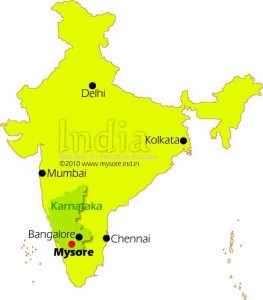Half of school dropouts in K’taka are dalits
 Bengaluru:Nearly half of the school dropouts in the primary section happen to be dalits. Figures show that as many as 1.38 lakh dalit children dropped out of school within two years of their enrolment as against a total of 2.9 lakh dropouts. In other words, 48% of dropouts are from dalit communities.
Bengaluru:Nearly half of the school dropouts in the primary section happen to be dalits. Figures show that as many as 1.38 lakh dalit children dropped out of school within two years of their enrolment as against a total of 2.9 lakh dropouts. In other words, 48% of dropouts are from dalit communities.
This alarming revelation came from a report by The IndiaGoverns Research Institute based on government figures here on Thursday. The figure pertained to primary school section, from classes 1 to 5, and the period between 2012 and 2014.
After sourcing data from the District Information System for Education, the institute segregated it at assembly constituency levels.
The report said in 2011-12, there were 14.97 lakh dalit children studying in classes 1 to 5 in the state. In the next two years, by 2013-14, 1,38,864 children had dropped out. In the case of children from other communities, out of 38.6 lakh students, 1.52 lakh had stopped coming to school.
Interestingly, the top-10 constituencies where most number of dalit students left school are reserved constituencies (represented by dalit MLAs). And all the 10 constituencies — Indi, Humnabad, Yelburga, Chincholi, Chittapur, Shorapur, Devadurga, Bhalki, Basavakalyan and Hadagali – are located in north Karnataka region.
“Backwardness of the north Karnataka region, poverty and migration for employment contribute to the higher dropout rate among dalits,” said sociologist Prof GK Karanth.
VeenaRamanna of IndiaGoverns Research Institute said much needs to be done. “Despite the present government’s focus on this (dalit) section, the problem has not been solved. It indicates a lot and calls for urgent intervention,” she said.
DROPOUT RATE 6.99%
The dropout rate in government schools is 6.99%, much higher than private schools at 3.2%. In 2011-12, there were 30.33 lakh children in classes 1 to 5 in government schools. By 2013-14, they had reduced to 28.21 lakh, a decrease of 2.12 lakh. During the same period, 23.17 lakh children in private schools had reduced to 22.43 lakh, a decrease of 74,198 (3.2%).
The trend is the highest in north Karnataka region, with nine constituencies figuring in top-10 constituencies with most number of children leaving the school system. Shanthinagar in Bengaluru ranks fifth in the dropout rate. Out of 224 MLA constituencies, more than 1,000 children have dropped out in 113 constituencies.
GIRL ENROLMENT LOWER
The enrolment of girl children continues to be low. Last year (2013-14), the state average of girl to boy ratio was about 94% per assembly constituency. In 2013-14, 2.54 lakh fewer girls than boys enrolled in government and private schools. Only in 11 assembly segments, the enrolment of girls has exceeded boys. Two constituencies in Bengaluru, Rajajinagar and BTM Layout, figure in the top 10 constituencies with low gender ratio.
99% WATER AND TOILET FACILITIES!
Surprisingly, the government has claimed that 99% of government schools have toilet facility for both boys and girls! Hubballi-Dharwad East assembly segment, which ranks the lowest, has 91% schools with toilet facility for boys and 90% schools for girls. The assembly segments with 100% toilet facilities number 161 for boys and 184 for girls. Even private schools have scored well in the loo parameter. In another surprise, the government has claimed that barring two assembly constituencies – Kunigal and Sorab – the remaining 222 have 100% drinking water facility in government schools! In these two constituencies, 99% of government schools have drinking water. As far as private schools are concerned, the poorest drinking water facility is at Haliyal (96%). “These findings are indeed surprising to us. People should verify it and ask their representatives,” said sociologist ChandanGowda.
Explaining the importance of the data, activist Ashwin Mahesh said: “Nobody is looking at the data systematically. The MLA can use the data to improve his understanding, make suggestions for improvement and ask the government for greater allocations, if the constituency is lagging behind on any parameter.”
Source: The Times of India





